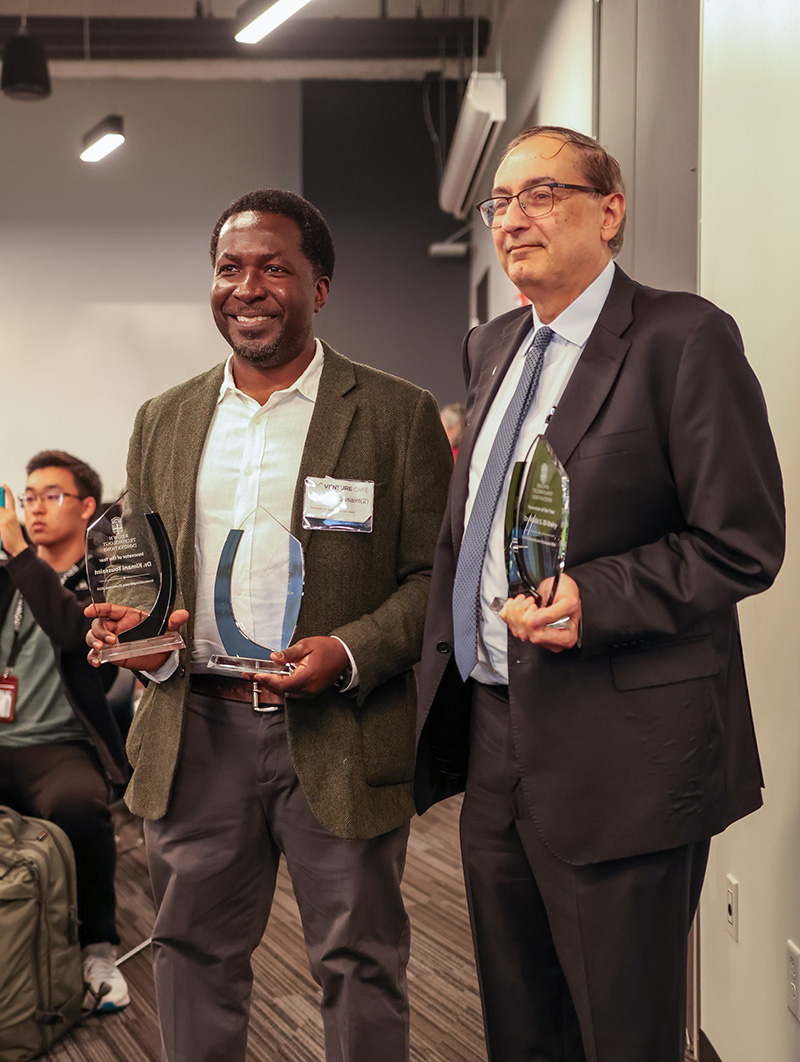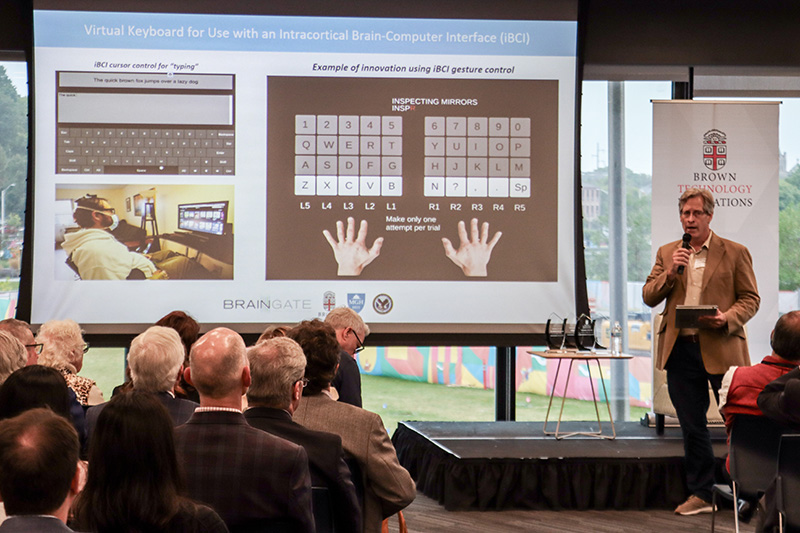
Senior Associate Dean for Research and Strategic Initiatives at the School of Engineering and Thomas J. Watson, Sr. Professor of Science Kimani Toussaint was awarded both Innovator of the Year and Innovation of the Year for his work with Brown Technology Innovations. Toussaint shared Innovator of the Year accolades with Warren Alpert Medical School Professor Wafik El-Deiry, M.D., based on the number of invention disclosures. Toussaint’s “Pulse Oximetry without Skin Tone Bias” won Innovation of the Year, marking the second year in as many that an engineering professor has garnered the most votes in the showcase competition.
The Innovation@Brown showcase is an opportunity for Rhode Island’s entrepreneurs, startup founders, venture capitalists, and industry leaders to preview cutting-edge technologies, startups, and innovative ideas emerging out of Brown University. Awards for Startup of the Year, Inventor of the Year and Innovation of the Year were awarded to Brown-affiliated ventures, while more than 20 early stage ventures lined the halls of the Rhode Island Venture Cafe.
Five of the top seven semifinalists for Innovation of the Year came from engineering, with Toussaint and L. Herbert Ballou University Professor Leigh Hochberg advancing to the final round at the cafe and pitching their ventures that evening. Engineering faculty Jimmy Xu, Angus Kingon and Brian Sheldon, and Ian Gonsher joined Butch Rovan of the music department and Warren Alpert Medical School’s Jake Kurtis, with Rovan joining Hochberg and Toussaint to advance to the finals stage.
“As an academic, it truly is an honor to be recognized as an inventor, particularly among such an outstanding group of fellow researchers with amazing inventions,” Toussaint said. “It’s a nice reminder that our work has the potential to impact the world beyond academia.”
Toussaint and his team are developing a novel photoplethysmography (PPG) technique that leverages optical polarization for more accurate estimates of blood oxygen. PPG is an optical technique that monitors blood oxygen saturation levels, typically through the use of pulse oximeters. Conventional pulse oximetry has been found to overestimate blood oxygen for individuals with appreciable amounts of melanin in their skin. As a result, those with darker skin tones are close to three times more likely to suffer from silent hypoxia. Toussaint’s innovation is a potential solution to this prevalent problem for people of color in health care delivery.
With support from Brown Technology Innovations (part of the University’s Office of the Vice President for Research), Brown faculty can transition research ideas into impactful commercial ventures. In 2023, Engineering Associate Professor Kareen Coulombe’s “Engineered Cardiac Tissues for Regeneration” received the most votes at the inaugural showcase.

